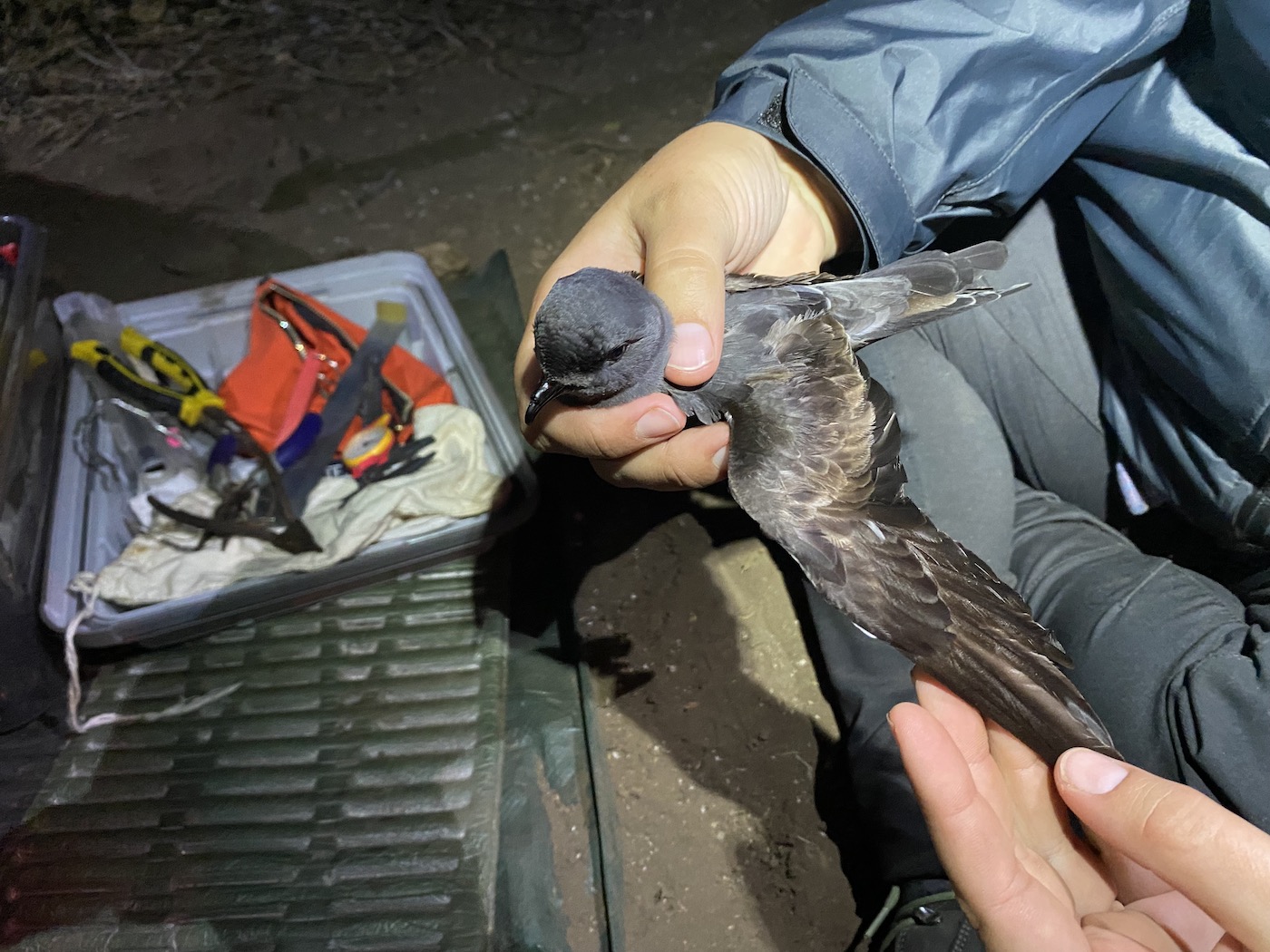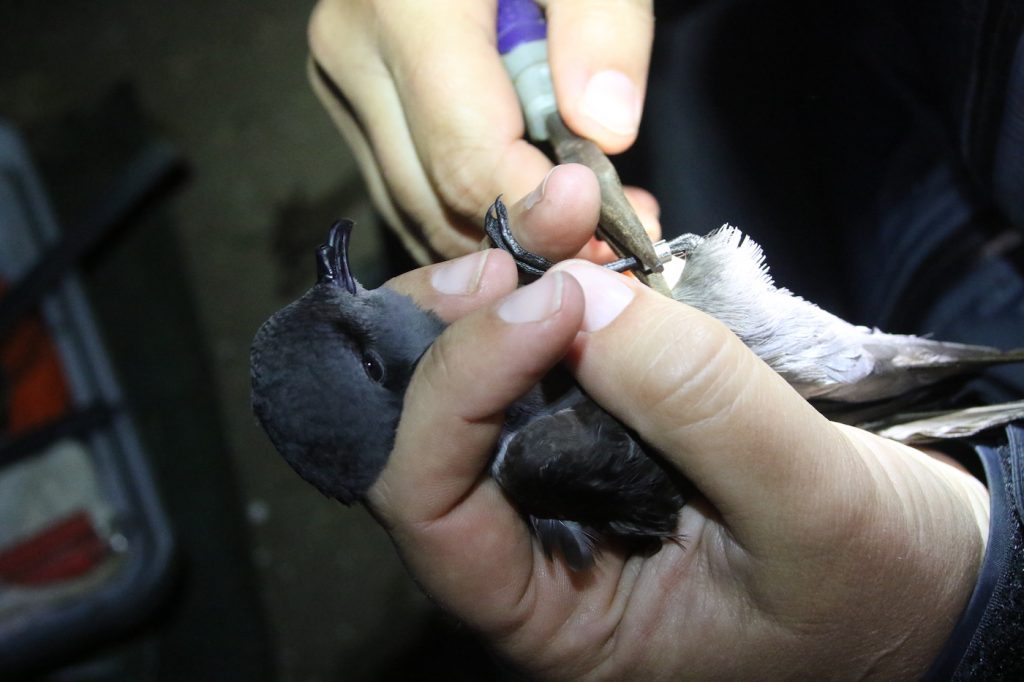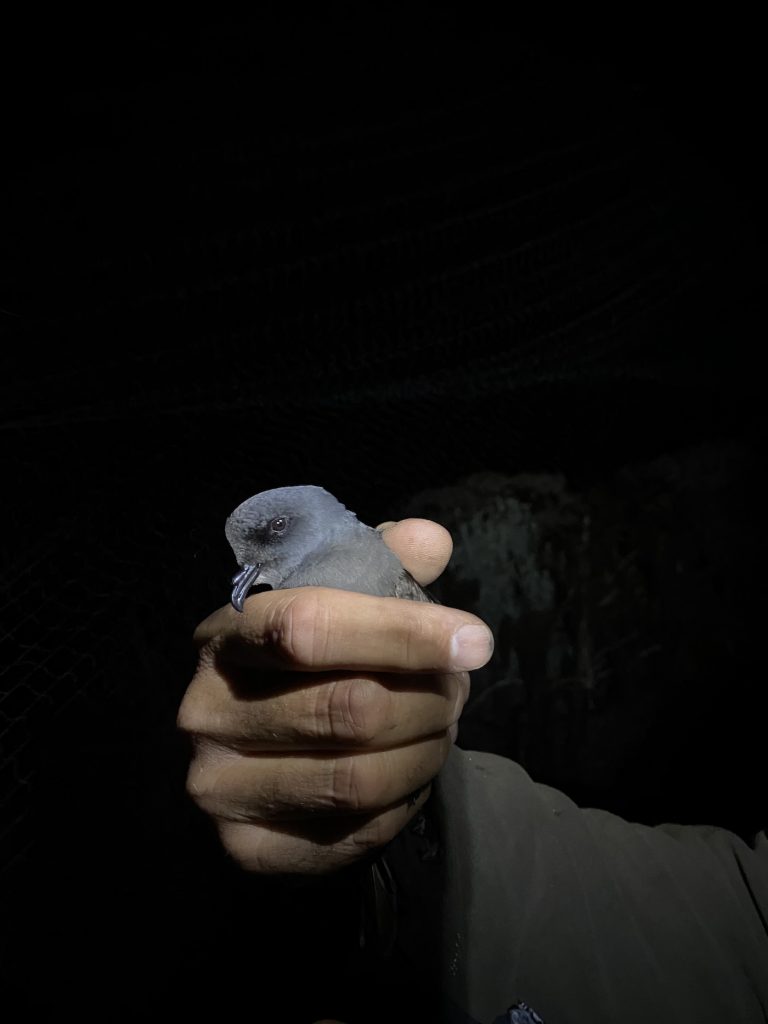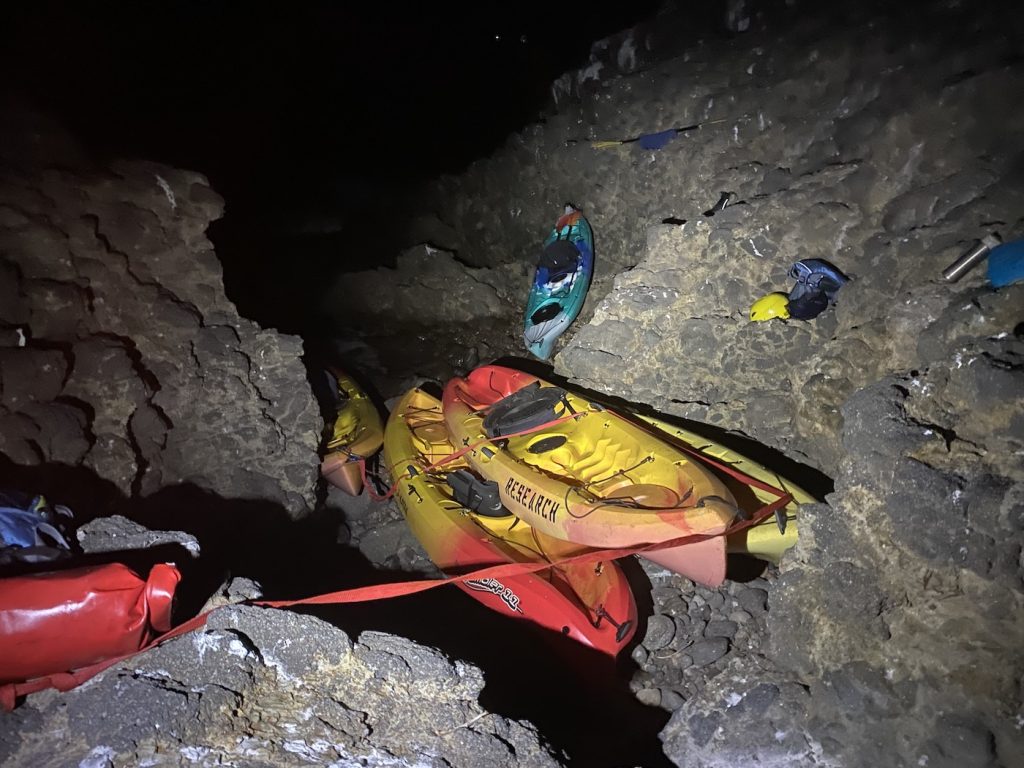‘Mystery Bird’: Getting to Know the Ashy Storm Petrel

It was 9:30 pm, and I was kayaking out to Scorpion Rock, a half-mile east of Scorpion Anchorage on Santa Cruz Island. I was meeting up with several nocturnal seabird biologists finishing their last round of mist netting for 2021 of the secretive ashy storm petrels on the Channel Islands National Park.
If I didn’t know better while approaching Scorpion Rock, I would’ve thought I was attending a concert (albeit of the pelagic avian variety) at the Santa Barbara County Bowl. The fog was thick and dewy. I could see the wispy mist drifting by in the beam of my headlamp. I also saw long beams of light casting brightly off Scorpion Rock where the biologists were busy setting up their mist net. At least 10 private boaters were anchored due east at nearby Little Scorpion Anchorage, various lights illuminated from the top of their masts. As I drew closer to Scorpion Rock, a cacophony of pelagic birdsong bellowed from an MP3 player off the guano encrusted volcanic crag as the sounds wafted upward into the canopy of overcast.
“They are a mystery bird,” said seabird biologist Katy Carter, operations manager for the California Institute of Environmental Studies, who has spent many nights mist netting on Scorpion Rock. “There’s not a lot known about them.”
The Scorpion Rock Experience

In the past, touching down on Scorpion Rock has proven to be an actual event itself. However, we were blessed with a big, swamping high tide where we could easily ride the southerly surge above the legions of purple sea urchins and acorn barnacles. I found the rest of the crew’s kayaks tied off together, and I safely touched down without hesitation in the narrow gully just below them.
After securing my kayak above the high tide mark, I soon joined the seabird crew huddled together amongst dormant giant coreopsis and bushels of saltbush. The soft rattling calls of the ashy storm petrel blurted away from the MP3 player. They had already banded four petrels. It wasn’t another 15 minutes before biologists were busy banding another one of these smokey-colored seabirds.

“They are super aerodynamic,” said Mike Parker, executive director of California Institute of Environmental Studies, as he approached the net for the petrel. “They can see the net. They have great eyesight.”
The ashy storm petrel was gently disentangled and then handled by biologists. Blood was taken for mercury levels. The petrel was measured and weighed and then banded. Then the bird was gently laid on its back in the palm of a biologist to scour its midsection for the brood patch to see if they are breeding.
Their entire lifecycle is documented as biologists gather an index of population densities. If the birds survive, they’ll return to their same nesting site at Scorpion Rock year after year. Afterwards, Parker held the petrel close and walked away from the rest of us to release the seabird back into the pelagic void.
With a flight pattern like that of a bat, the world population of these nocturnal seabirds is 10-12 thousand breeding pairs, and 45% of the entire population utilizes the Channel Islands for breeding and nesting. The Channel Islands are ideal nesting habitat for them, the porous, volcanic rock allowing them to find concealed sites hidden from predators like gulls, ravens, barn owls, and peregrine falcons. The remote Farallon Islands to the north, 27 miles off the San Francisco Bay, are the petrels’ other prominent nesting site.
“Sense of smell is off the hook,” continued Parker. “Their olfactory senses are ridiculous. Possibly helps them find their way. Super phenomenal.”
Their beaks, with a useful spur at the end of it, helps them feed on fish eggs and little shrimp as they travel throughout their limited range from Mendocino in Northern California south to Baja California.
Ironically, these seafaring petrels that live much of their lives on the water do not enjoy saltwater in their food. At a closer inspection, ashy storm petrels come physically equipped with their own tubal desalination plant. Attached above their beaks is their “tubenoses.” When feeding they can process the salt out of their food through their tube above the beak.
Long-lived

Every time one of the petrels flew into the mist net there was a charge of excitement, all the petrels seemingly relaxed in the hands of biologists. The seabird crew handled the petrels deftly. The birds appeared fragile, but hardy at the same time where they spend so many challenging days at sea. As delicate as they seem, ashy storm petrels are long-lived and can survive for 25 years.
As I kayaked back to Scorpion Anchorage, bioluminescence appeared with each stroke of my paddle. The beams of light coming from Scorpion Rock faded into darkness behind me, and my warm sleeping bag beckoned back in the canyon.
The biologists banded nine petrels in all that dewy night. Banding assists in population indexes up and down the West Coast. Each bird matters, the Channel Islands being the main hub for these reticent, night-loving seabirds.







You must be logged in to post a comment.